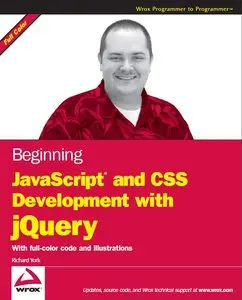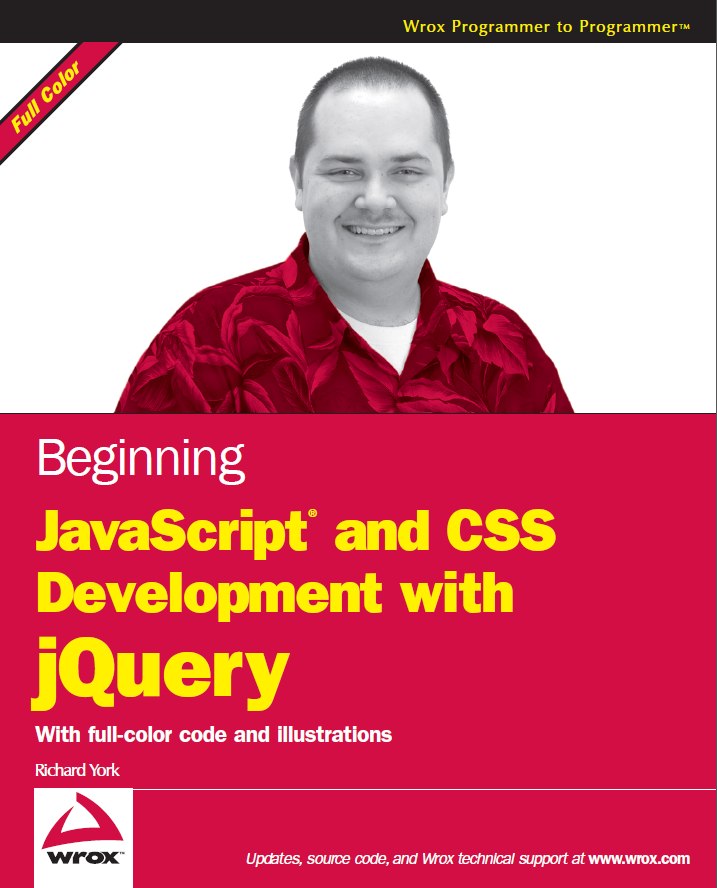Beginning JavaScript and CSS Development with jQuery
by Richard York
English | 2009 | ISBN: 0470227796 | 560 pages | PDF (color) | 9.69 MB
by Richard York
English | 2009 | ISBN: 0470227796 | 560 pages | PDF (color) | 9.69 MB
The jQuery JavaScript framework is a rising star in the world of web development. JavaScript frameworks in general have grown to become immensely popular in the past few years in parallel with the ever-increasing presence of JavaScript-driven, so-called Web 2.0 websites that make heavy use of technologies like AJAX and JavaScript in general for slick graphical enhancements that would be impossible or much more cumbersome to incorporate without JavaScript.
jQuery’s mission as a JavaScript library is simple — it strives to make the lives of web developers easier by patching over certain portions of cross-browser development and by making other tasks commonly needed by developers much easier. jQuery has the real, proven ability to reduce many lines of plain-vanilla JavaScript to just a few lines, and, in many cases, just a single line. jQuery strives to remove barriers to JavaScript development by removing redundancy wherever possible and normalizing cross-browser JavaScript development in key areas where browsers would otherwise differ, such as Microsoft’s Event API and the W3C Event API, and other, more remedial tasks like getting the mouse cursor’s position when an event has taken place.
jQuery is a compact, lightweight library that currently works in Microsoft’s Internet Explorer browser from version 6 on, Firefox from version 1.5 on, Safari from version 2.0.2 on, Opera from version 9 on, and Google’s new Chrome browser from version 0.2 on. Getting started with jQuery is very easy — all you have to do is include a single link of markup in your HTML or XHTML documents that includes the library. Throughout this book, I demonstrate jQuery’s API (Application Programming Interface) components in detail and show you how all the nuts and bolts of this framework come together to enable you to rapidly develop client-side applications.
I also cover the jQuery UI library, which makes redundant user-interface (UI) tasks on the client side ridiculously easy and accessible to everyday web developers who might not have much JavaScript programming expertise. Have you ever wondered how websites make virtual pop-up windows using JavaScript, HTML, and CSS? The jQuery UI library provides the ability to create these pop-up windows and includes the ability to animate transitions like fading the window on and off, or having it re-size from very small to full sized. The jQuery UI library gives you the ability to use animations and transitions using JavaScript, markup, and CSS that you may have thought previously could only have been done with Adobe’s Flash player.
Please No mirrors.



